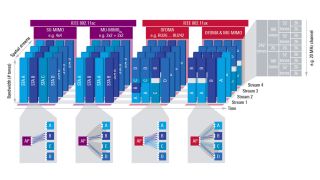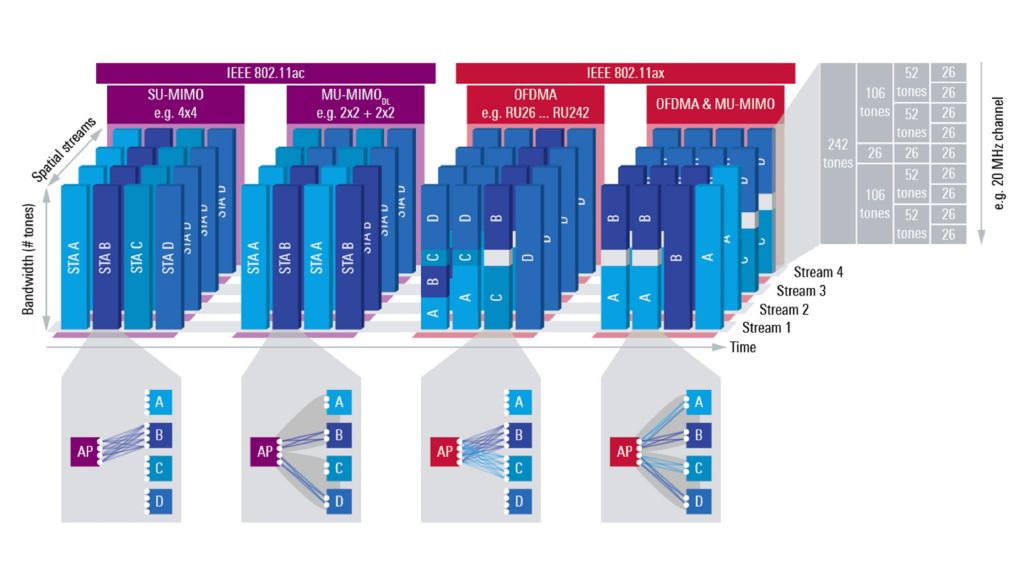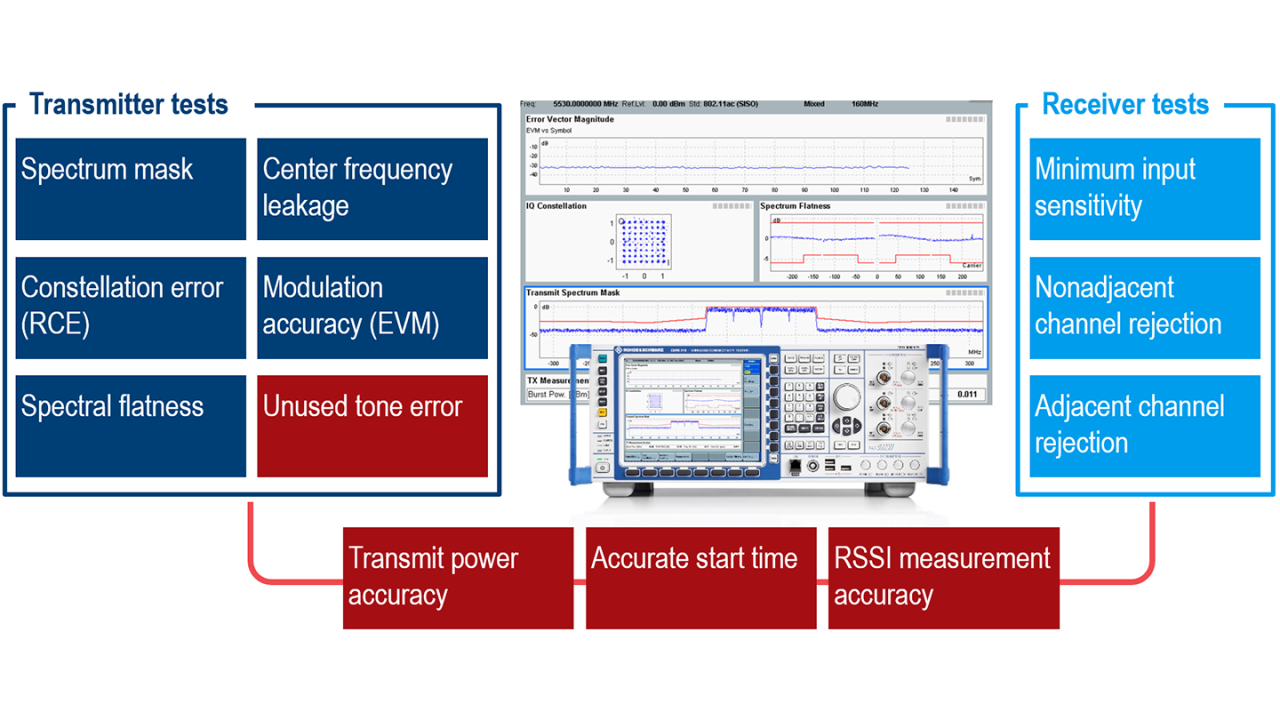The IEEE 802.11ax amendment (Wi-Fi 6/6E), operating in the 2.4 GHz, 5 GHz and 6 GHz bands, intends to improve WLAN system efficiency, especially the throughput per station in dense signal environments and outdoor environments. For the first time, Wi-Fi 6/6E allows simultaneous scheduled communications of multiple stations from and to the access point (AP) – a kind of revolution for Wi-Fi. This requires an introduction of a couple of new features that necessitate new testing and certification approaches. Our unique portfolio, which offers testing in non-signaling and signaling mode, is ideal for meeting these needs.
WLAN IEEE 802.11ax testing
Rohde & Schwarz test solutions are optimized to help test engineers join the WLAN revolution by implementing the sixth generation of Wi-Fi.




Evolution from 802.11ac to 802.11ax covering OFDMA and MU-MIMO in uplink and downlink.
The Wi-Fi 6 revolution
The IEEE 802.11ax PHY is essentially based on IEEE 802.11ac but uses a decreased subcarrier spacing of 78.125 kHz. This quadruples the symbol time, which, together with longer guard times, helps to improve robustness and efficiency. 1024QAM modulation and MU-MIMO will also be supported. The major changes come from the introduction of OFDMA, which enables multiple stations to be served simultaneously in order to improve overall capacity, latency and efficiency in dense signal environments. Resource units (RU) are being introduced to split the available spectrum in smaller parts. A scheduling procedure using trigger frames ensures synchronized uplink communications in OFDMA and MU-MIMO schemes.


Traditional and new test items for Wi-Fi 6
Your 802.11ax test challenges
The 11ax standard defines various transmitter and receiver tests such as EVM, TX power, spectrum emissions and sensitivity. For example, 1024QAM modulation requires signal generation capabilities to transmit reference signals with very low distortion over a bandwidth of up to 160 MHz and the required analysis bandwidth. Completely new are tests to ensure that stations perform correctly in following the scheduling rules for time and frequency resources for the uplink, as defined in the new trigger frame. This includes measurements such as timing error, unused tone error and TX power adjustment, which requires a test solution in signaling mode.
Benefits of Rohde & Schwarz 802.11ax test solutions
- Complete set of solutions covering tests for chipsets, modules, stations and access points across all application layers from RF to signaling testing and end-to-end data application testing functionalities
- Test solutions for every purpose – from R&D to production and certification – developed together with the key players in the ecosystem
- Signaling test solutions covering the new tests required for OFDMA/MU-MIMO in development and certification






